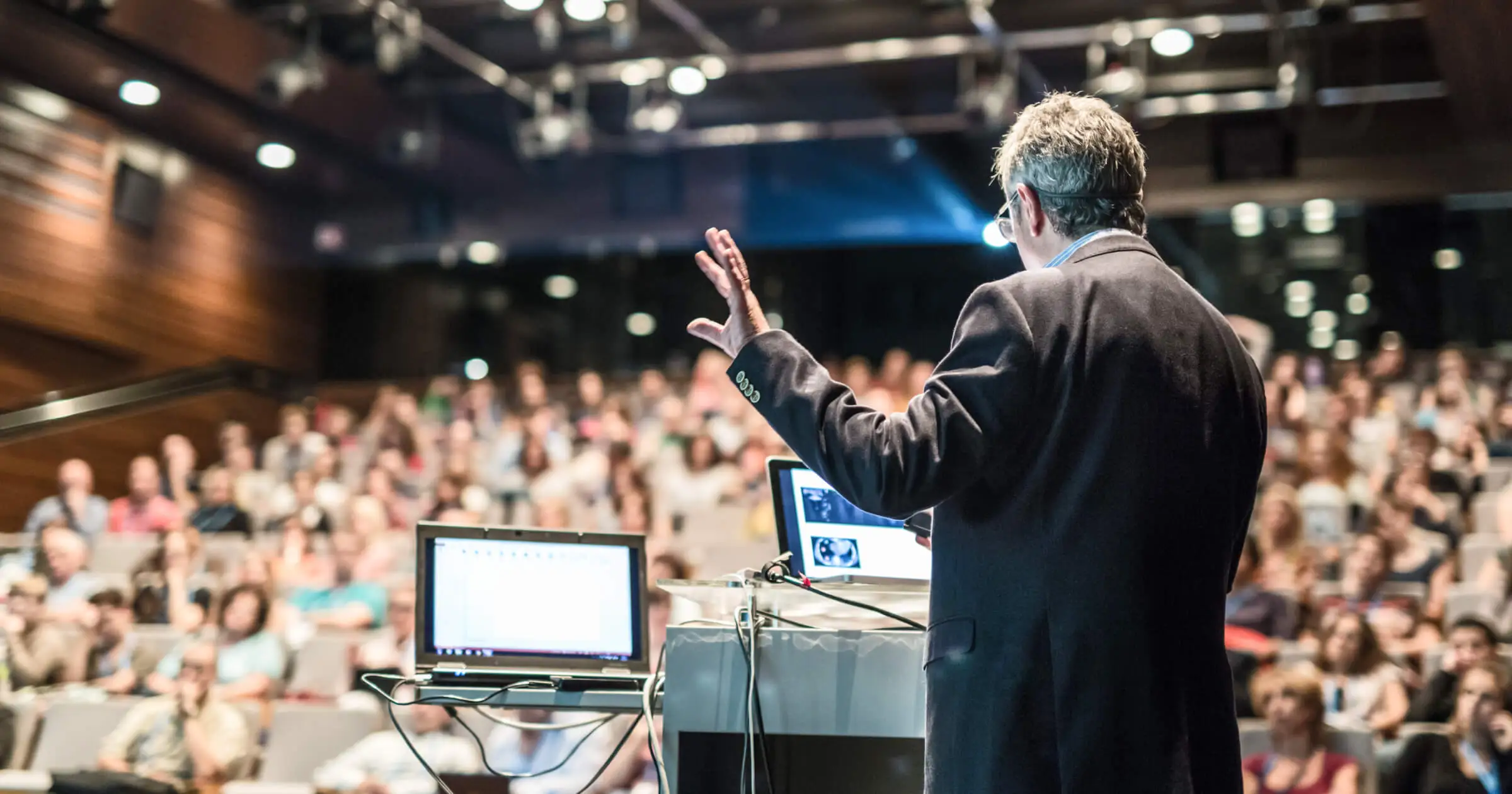If you're a speaker or author, content marketing is an essential strategy that helps you reach new audiences with your message, achieve your business goals, and build your brand. This is what you need to know in order to create a content marketing plan, or to improve the content marketing you are already doing.
What is content marketing?
Content marketing is the process of creating and distributing valuable, relevant, engaging and consistent content to attract and retain a clearly defined audience.
The purpose of content marketing is to establish a strong connection with your target audience and build trust over time. This helps you generate leads, increase sales, and strengthen your brand image.
Identify your target audience
The first thing any business has to do is identify the slice of the market you know you can help. These are the people within your potential audience who are most likely to want your service and any products you provide (online trainings, cheat sheets for your method or system, etc.).
You may need to consider age, gender, income, location, interests, or other variables that will help you zero in on whom you help, and how you help them.
Ask yourself these questions: What are their problems that you can solve? What struggles do they have? What obstacles do they encounter as they try to attain their goals, whether personal, or business-related?
How are they already trying to solve their problem? Why isn't it working? How does your service or product work better?
Know... Like... Trust...
Once you can answer these questions, and others that clarify your solution for a particular group of people, you can begin to create content that captures their attention.
Ultimately the purpose of your content marketing plan is to build a strong enough relationship with your audience that they are willing - no, eager - to pull out their wallets and pay you. But there is a process you have to travel with them to move from "unknown entity" to "trusted and valued source".
This journey begins by getting their attention so they know that you exist. Get their attention by pointing out their biggest problems and making them sound uncomfortable, or even miserable. Use your content to describe your solution to this problem in relatively broad brushstrokes. Demonstrate that you are an expert on this topic by diving deep into one particular aspect.
Once they interact with this content, invite them to take another step: link to another piece of relevant content; invite them to join your email list; offer to send a useful PDF or ebook or audio file. Once they are reading your useful and engaging content, keep them reading! (Or watching, or listening...)
The more content from you with which they engage, the more they come to like you. You become a friend, someone they begin to think of when thinking about the topic for which you want to be known.
Ultimately, after engaging with enough of your content, they grow to trust you. It's not until this stage that your potential clients are ready to pull out their wallets and pay you. So creating content prolifically - demonstrating all your expertise - is the key to getting content marketing to work as a viable strategy.
Some of the goals for your content marketing strategy include:
- Build networking opportunities. This happens when you share your content, or sometimes quote or refer to other industry leaders (and let them know you're doing that!)
- Increase your status as a thought leader
- Generate new qualified leads for your business
Content topics
There are myriad potential topics for your content. Here are just a few:

Elements of great content
There are a few essential elements of great content marketing:
- Well-researched, high-quality content that is engaging and useful to your target audience.
- A regular, consistent schedule for creating content so you stay top-of-mind with potential clients or customers. Develop a content calendar and stick with it.
- Story-based content is the most engaging, and helps you build the know-like-trust factors.
- Clear calls to action within your content in order to move your potential clients or customers down your sales funnel.
- Analytics to track the performance of each piece of content so you can see what's working and adjust as needed.
- A willingness to experiment with new content formats, strategies, and platforms to reach your target audience where they are.
Types of content
Please be aware that the strategy is "content marketing". The tactics - or media - you use for how to share engaging, reliable, valuable content are likely to change over time. The content format will always be dictated by the type of content that most resonates with your target audience on each channel.
That being said, it's a good idea to experiment with a variety of types of content, using different media. Some people love to watch videos, others prefer audio, and others just want the summary in text. To reach a broader audience, start with one or two types of media, then add others as you are able.
Written content
Blog article. Just like this article that you are reading on our blog, writing for your own blog - or as a guest on other people's blogs - is a consistently good way to stay in front of your target audience. You can run ads to articles, send article links to the people on your email list, optimize them for SEO for organic traffic, and more.
Ebook. These can be very long, but they can also be very short and targeted to a specific problem. They are great for generating new leads: ask for your potential client's email in order to receive the ebook so they are on your email list.
White paper. Like the ebook, these can be offered as a lead magnet (to generate new leads) in exchange for the reader's email address. They are best when you want to increase your reputation as a subject matter expert. Use hard evidence and statistics to back up your thesis.
Testimonials. Make sure your website prominently includes testimonials. Just like on Amazon or any other e-commerce site, people count on reviews as part of the know-like-trust equation.
Email list. Once your prospect joins your email list, continue to engage them with highly valuable and relevant content. Make them feel like they are special because they are now in your "inner circle", receiving emails that no one else has access to.
Visual content
Images. A picture is worth a thousand words, and this is especially true on social media, where posts with images tend to get more engagement than those without.
Infographics. These are highly shareable, and can take complex topics and make them digestible for the average reader.
Video. This is one of the most popular types of content, and for good reason. Statista reports that US residents spend an average of 323 minutes per week watching video content - just on their mobile phones(1). People love to watch videos, and they are a great way to build relationships with your target audience. You can post them on social media, use them in email marketing, and more.
360 degree video. If you can identify a good use for these sorts of videos, they promote sharing and give your audience a completely new way of understanding your offer.
Screenshots. Show how your service or product looks or how it makes a difference in people's lives.
GIFs and animations. These are fun, highly shareable types of content, and can be made with a variety of social media tools. If they aren't appropriate for your audience, you may find that they don't work well. On the other hand, they are very popular with other types of audiences.
Audio content
Podcasts. One of the most popular types of audio content right now is podcasts. Develop a strategy for being invited to be a guest on other people's podcasts, and consider starting your own show.
Audio files. You can create audio files of your best speeches, or record sections of you reading your book. These are great lead magnets (any downloadable file you can use to capture someone's email address and add them to your list).
Audio books. You can record your books yourself or hire a voice actor.
Interactive content
Contests. People love to see if they can win something. Contests are also useful for creating user-generated content, and increasing engagement with your company and brand. Holding an online or in-person contest is another way to collect email addresses to add to your list.
Quizzes. You can use quizzes simply for user engagement, or to collect hard data from your audience to be used in your marketing strategies.
Polls. Similar to quizzes, but you can visually tally the information and let your audience see what others in your audience are saying and choosing. People like to compare their answers to other people's answers.
Calculators. Identify something quantifiable in your industry and hire a development team to create an easy-to-use calculator. Examples include headline generators, mortgage calculators, etc.
Types of video content
In addition to the general content suggestions above, videos provide a unique angle on specific types of content. They include:
- Tutorials. The ultimate how-to content
- Product demos. Depending on your industry this is a great way to get more views and capture more attention
- Vlog. As a speaker and/or author, people want to know what makes you "tick", how you spend your time, how you organize your day for optimal productivity. If you want to fast-track the know-like-trust factors, vlogging is a great tool to use
- Interviews. Ideally, get other people to interview you, so you come across as the expert. Alternatively, you can interview others - as in a video podcast - and still come off as the expert who knows all these knowledgeable people.
- Webinar. Invite your audience to meet with you live for a presentation on a specific topic of interest. Webinars typically also sell something at the end. You could switch it up and charge a nominal fee to participate in the webinar and provide pure content.
How to promote your content
To get the full benefit of a content marketing strategy, you need to have a plan for publishing your content and then promoting it. Here are some ideas:
Social media. This is the most obvious one, but it's worth mentioning. Include links to your content on all your social media channels, and encourage your followers to share with their networks.
Email marketing. As mentioned above, add a link to your latest blog post or other content in your email newsletter. Post an opt-in form on your website for people to subscribe to your mailing list.
Paid promotion. You can run ads on social media or other platforms to promote specific pieces of content and increase visibility.
Influencer marketing. Reach out to influencers in your industry who have a large following and ask them to share your content.
Guest posting. Guest post on other blogs and include a link back to your website or landing page with your free content offer. This can help you reach new audiences and drive traffic back to your site as well.
Search engine optimization (SEO). Optimizing your content for search engines is essential if you want people to be able to find it in the first place. Do your keyword research, then include the best keywords throughout your content, and make sure your website is set up for SEO success.
There are myriad ways to promote your content, and you don't necessarily need to do all of them. Experiment and see what works best for you and your audience. And always be sure to measure your results so you can see what's working and adjust accordingly.
Measure your results and adjust
As with any marketing strategy, it's important to measure your results and adjust your content marketing strategy as needed. Track things like website traffic, conversion rates, email signups, social media engagement, and any other metric that's relevant to your business. This will help you determine what's working and what's not, and how you can adjust your strategy going forward.
For example, if you notice that a particular type of content is consistently being shared more than others, you may want to focus on developing more of that type of content in the future. Or if certain pieces of content are driving a higher conversion rate than others, you may want to create similar pieces with a similar format and target market.
Successful content marketing is a long-term strategy, so it's important to be patient and consistent in your efforts. It can take months or even years to see results, but it's well worth the investment as you build your list, and develop the know-like-trust factor between you and your audience.
Ultimately, your content marketing strategy should always be evolving and adapting based on what works best for your business. With the right approach and a willingness to experiment and learn, you can create truly valuable content that engages your audience and drives results for your business.








